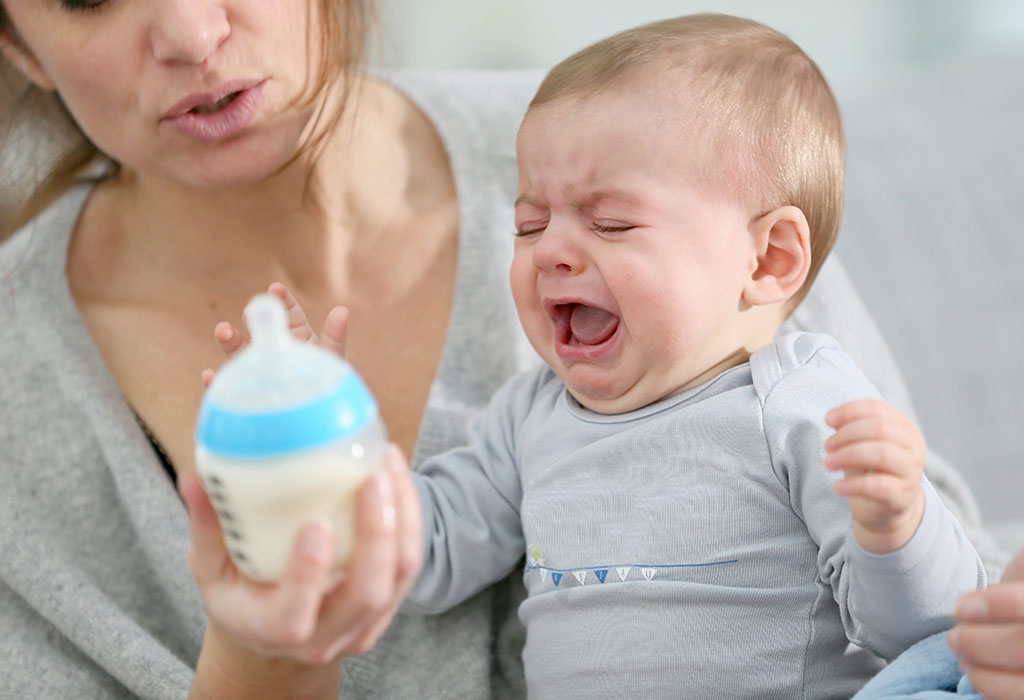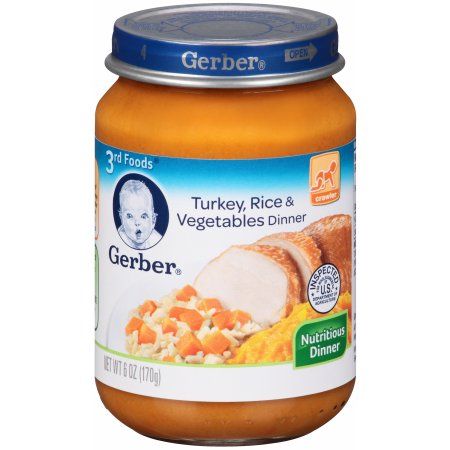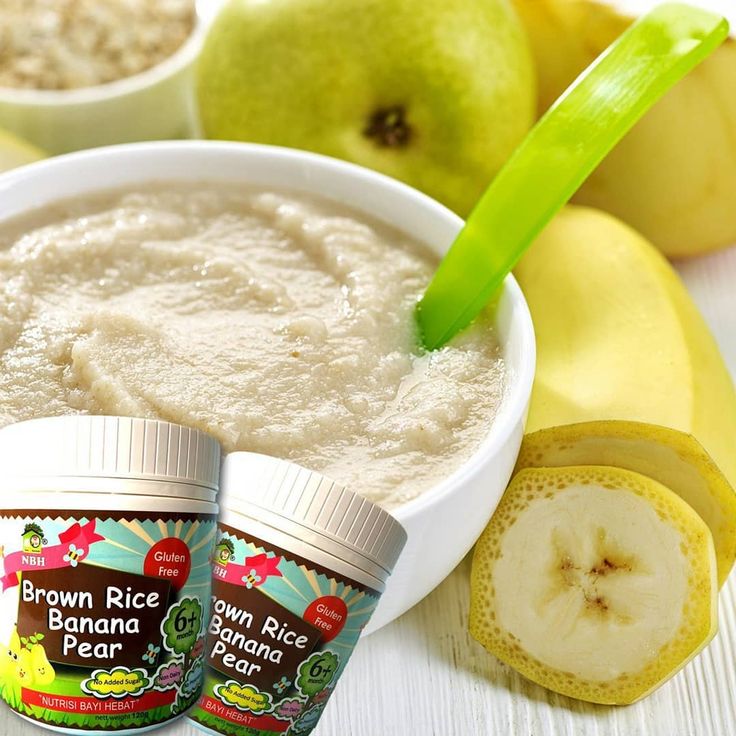Baby hitting bottle during feeding
Why Does My Baby Hit His Bottle While Eating (And Is It Okay?)
Since we can’t communicate with our babies, it can be incredibly frustrating trying to figure out why our little ones behave the way they do. Actions that we as adults may consider misbehavior aren’t malicious, but what do they mean? What does it mean if your baby is hitting his bottle during feeding time?
A baby hitting his bottle while feeding is normal behavior and can likely be attributed to one of several things: your baby is frustrated with the nipple flow and he’s not getting enough milk, your baby is discovering the use of his hands and is trying to hold his own bottle, or your baby is getting distracted and does not want to feed currently.
Keep reading to understand more about why your baby hits his bottle while feeding and learn a couple of tips to stop this from happening.
Table of Contents
Why do babies slap or hit their bottles while feeding?
It can be frustrating when it feels like your baby is fighting you at every turn, and this may include when your little one slaps at or hits his bottle while feeding.
There are three main reasons that your baby may be slapping at his bottle during feeding time:
- He’s distracted or frustrated
- He wants to hold the bottle himself
- The milk flow is not fast enough
Regardless of the reason why your baby is hitting his bottle, this action is considered normal. As long as the baby is not hurting himself or others, it should not be a cause of concern. If you think something is wrong with your baby, it is best to talk to your doctor about this behavior.
Distracted or frustrated
According to WebMD, slapping or hitting a bottle while feeding is a sign that the baby is getting distracted or getting frustrated.
Babies are sensitive creatures and they can pick up how mom or dad or their caregiver is feeling. If you are feeling anxious about bottle-feeding, your baby will sense this and will try to emulate the same feeling by hitting or swatting their bottle away.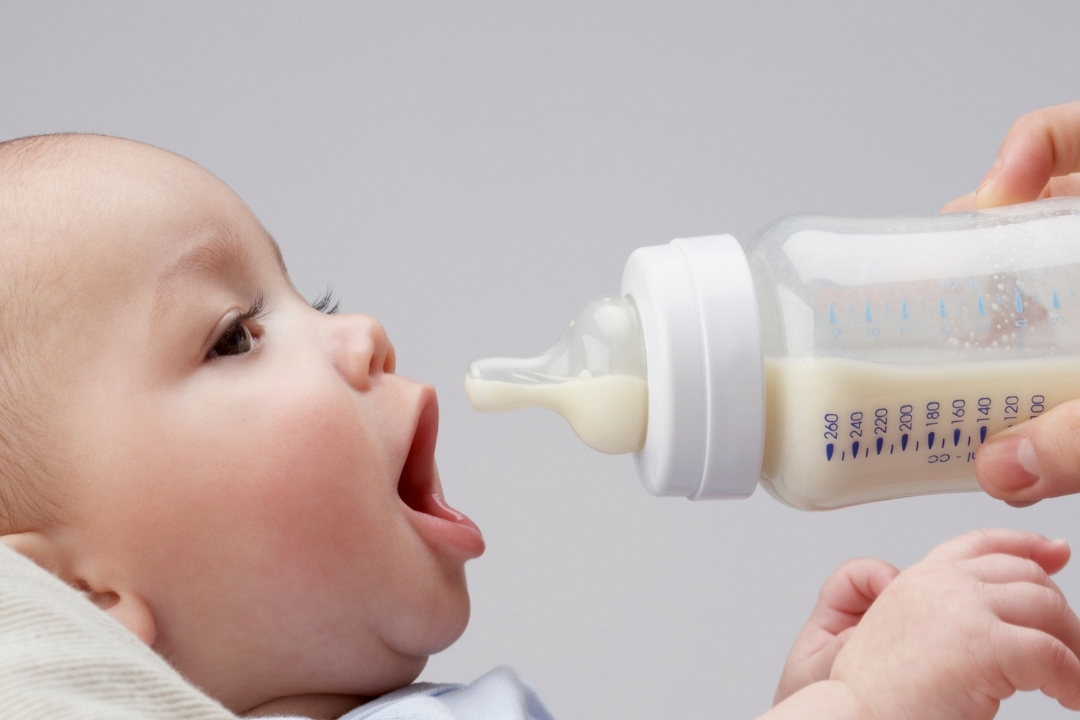
Hitting the bottle can be a sign of bottle refusal and you can get rid of this habit by creating a good and positive feeding environment with your baby.
Getting distracted while feeding is an issue because it means that your baby might not get all the formula or breastmilk that he needs to sustain him for some time and he will get hungry sooner.
Developing motor skills
Around the time your baby is 4 to 6 months, his motor skills are developing and evolving.
This means that his arms or legs will wiggle or kick more and arm wriggling can translate to your baby hitting his bottle while feeding. Doing this gesture can mean that your baby is practicing this newly-found skill.
When babies start to discover what their hands can do, they will keep doing it. This includes hitting, slapping, pinching, and grasping things.
During this developmental period, your baby is also trying to master hand-eye coordination and will try to swat things that they see – and this includes his bottle when he’s feeding.
Babies trying to hit their bottles is also a sign of them wanting to hold the bottle themselves. For babies who are too young or not developmentally ready, this movement might look like they’re hitting the bottle.
Inadequate milk flow
Although most of the time your baby hitting his bottle may be a sign of distraction or a developmental milestone, it can also mean he’s frustrated and even trying to communicate with you.
Your baby hitting his bottle may be a sign that he’s not getting milk (or formula) fast enough.
If this is the case, you will want to inspect the bottle and ensure that it’s being held correctly, there is an adequate amount of milk available, and that there is no restriction in the milk flow. If everything looks right, it may be time to move up to the next nipple size.
What if the baby is hitting the bottle out of your hand while feeding?
In the beginning, your baby swatting at his bottle is likely to be annoying, but not really a detriment to feeding.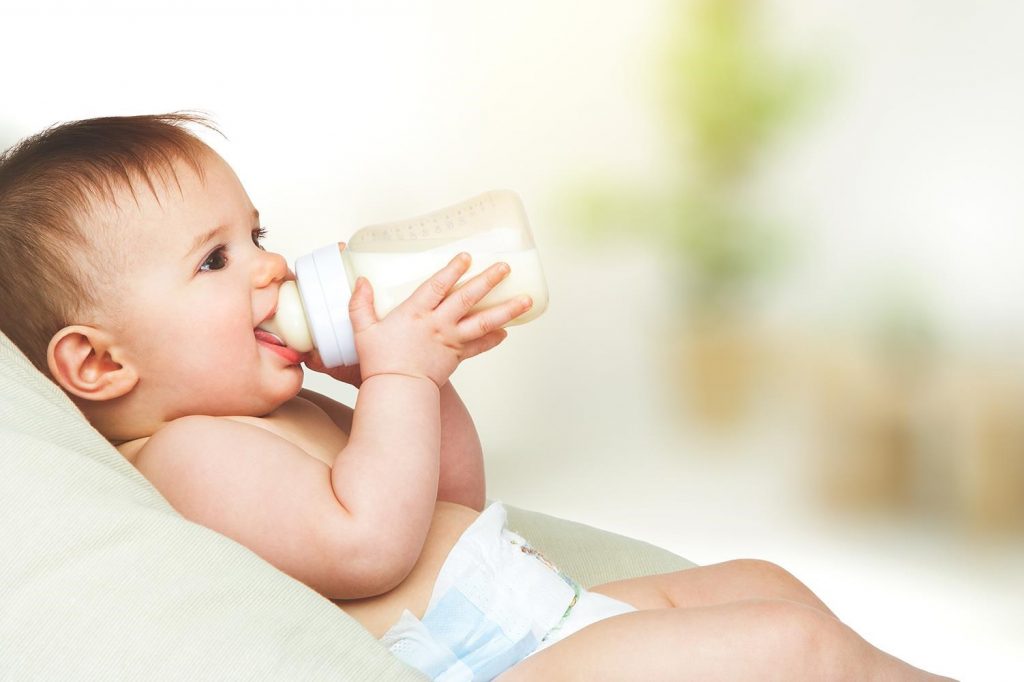 What happens once he’s able to knock it out of your hand?
What happens once he’s able to knock it out of your hand?
If your baby is hitting the bottle hard enough that it starts to fall or drop to the floor, it is best to take the bottle away or change his feeding position so he can’t swat the bottle away.
When feeding your baby, it is best to do it in a quiet environment that’s free from distractions to minimize the chances of your baby getting distracted.
If your baby keeps hitting the bottle, you might have to stop the feed, wait for him to calm down, and resume feeding.
If you think he is getting frustrated by the milk flow, it might be worthwhile to change the nipple to a faster flow. You will know if your baby is getting frustrated when he is crying or whining while on the bottle. You might have to try and experiment with different brands and nipple flows before you can find the best one that your little one likes.
3 ways to help deal with a baby that hits the bottle while eating
A baby trying to slap or hit his bottle repeatedly can be frustrating for both mom and baby and since babies can’t necessarily verbalize how or why they’re doing this – it’s up to us to find out why so we can help them.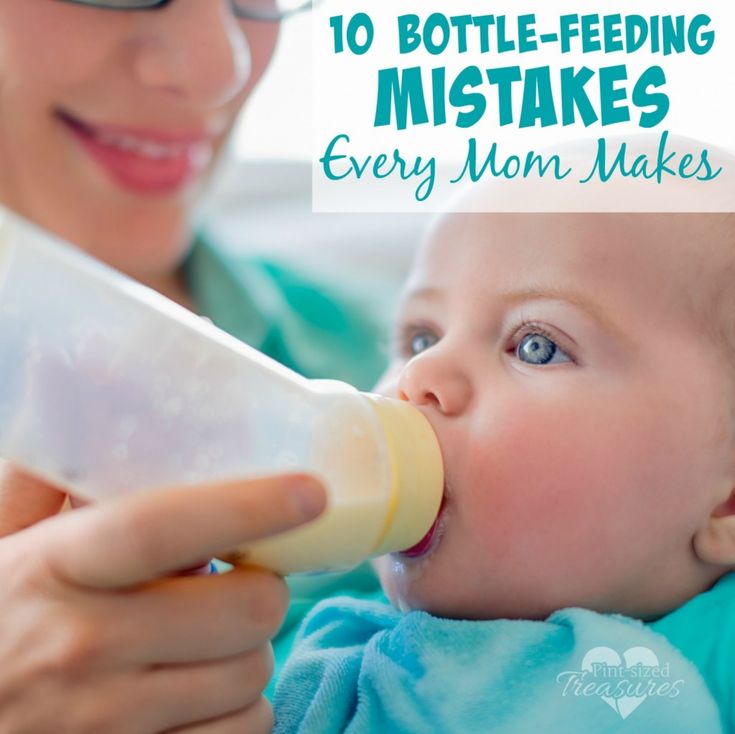
If your baby is hitting his bottle, try:
- Changing the feeding environment
- Letting him hold onto something else
- Using faster flow nipples
Change the feeding environment
If your baby is acting super distracted and can’t focus on feeding, it might be a good idea to change the place where you are feeding him. An area that has too many things going on, too many things to see or hear is not an ideal place to feed a baby because he will keep getting distracted.
Finding a nice, quiet area that is dimly lit will help to minimize the distractions and keep your baby focused on one thing – which is feeding.
If you are outside your house, you can try putting your baby in a nursing blanket to put a barrier between her eyes and the outside world that’s full of distractions.
Let him hold on to something else
A baby hitting his bottle is a sign that he wants to hold on to something while he’s feeding.
Give him something else to hold so he can feed comfortably while also giving his little hands something to do.
You can give him a lovey to hold, a teething necklace, or even your hand so that he can hold on to something and leave his bottle alone.
Try using faster flow nipples
When it comes to babies, it’s all about the flow of milk.
A baby who is hitting his bottle might be a frustrated baby trying to get more milk out.
If you think your baby is getting frustrated with the flow, you can try experimenting with other styles of nipples or going up a size.
Bottle Feeding Problems - Why Your Baby Squirms, Appears Uncomfortable – Baby Care Advice
When your baby squirms, appears uncomfortable during a feed, fusses, cries or refuses a bottle, seemingly fights the bottle despite being hungry, it can be challenge to figure out the cause. The timing and type of behavior she exhibits provides vital clues. This article discusses potential reasons for troubled feeding behavior.![]()
Does your baby display troubled behavior in relation to bottle-feeding, such as….
- Refuses a bottle
- Turning away from the bottle.
- Refusing to close her mouth around the nipple.
- Holding nipple in the mouth but not sucking.
- Taking only a small amount and then refusing more.
- Screaming when placed into a feeding position or at the sight of the bottle.
- Milk pouring out of baby's mouth.
- Feeding too quickly.
- Feeding too slowly.
- Falling asleep before the feed is completed.
- Coughing and spluttering when feeding.
- Not consuming as much milk as expected.
- Wanting more milk than expected.
- Throwing up large amounts of milk.
Then there may be steps you can take to remedy the situation and get your baby to calmly and happily take a bottle.
Behavioral reasons‘Behavioral’ means baby’s behavior is in response to the circumstances rather than a physical cause. Behavioral reasons are the most common of all reasons for infant feeding problems. There are numerous behavioral reasons for a baby to experience feeding problems and/or display problematic feeding behavior. Common reasons include:
Behavioral reasons are the most common of all reasons for infant feeding problems. There are numerous behavioral reasons for a baby to experience feeding problems and/or display problematic feeding behavior. Common reasons include:
1. Misinterpreting baby's cues as signs of hunger Does baby at times refuse feeds?Does she take only a little and not want more?
Babies are in an oral stage of develop. Sucking is the primary way babies soothe. They also learn by sucking and mouthing objects. Many babies have a strong desire to suck for reasons that extend beyond hunger, such as tiredness, boredom, discomfort and soothing. There may be times when you mistake your baby’s desire to suck for these reasons as hunger.
Newborn babies have an active sucking reflex. This means a newborn baby may accept a feed even when she’s not hungry, and she might guzzle down the bottle because she cannot choose to not suck when her sucking reflex is triggered. Once her sucking reflex has disappeared (usually by 3 months of age) she will willingly take only the amount she wants to take.
Once her sucking reflex has disappeared (usually by 3 months of age) she will willingly take only the amount she wants to take.
If you have mistakenly interpret her fussing or desire to such as hunger and offer her a feed, she might take a little and refuse the rest, or she refuse from the start. If you try to make her drink more than she wants, she will understandably get upset and fuss, cry and pull back from the bottle.
WHAT TO DO- See Hungry baby for more reasons why babies often appear
- See Infant reflexes
In around one third of consultations I have had with parents regarding an infant feeding problem, I found that parents were trying to make their baby drink more than he or she needed. In some cases, this was because of errors made their health professionals. They either failed to adjust calculations as baby matured or failed to consider baby as an individual. As a result, overestimated baby’s milk requirements.
In some cases, this was because of errors made their health professionals. They either failed to adjust calculations as baby matured or failed to consider baby as an individual. As a result, overestimated baby’s milk requirements.
If you think your baby is not drinking enough milk (breast milk or infant formula) you’re naturally going to feel concerned. If your concern translates into trying to pressure her to drink more than she wants or needs (gently or otherwise), you’re going to upset her. So it is very important for your peace of mind and your baby’s enjoyment at feeding times that you have realistic expectations about how much she needs.
WHAT TO DO- See How much milk does baby need for standard estimations for age and weight, and reason why a baby might take more or less than recommended.
- Follow your baby's feeding cues. Don't try to make her take more when she indicates she has had enough.
Sleeping and feeding are closely related when it comes to the needs of babies. Both are equally important to a baby's health, growth and development and feelings of wellbeing. You are no doubt aware that if your baby does not feed well she might not sleep well. But are you aware that the opposite is equally true. If she’s not getting enough sleep this has the potential to negatively impact on her feeding.
Both are equally important to a baby's health, growth and development and feelings of wellbeing. You are no doubt aware that if your baby does not feed well she might not sleep well. But are you aware that the opposite is equally true. If she’s not getting enough sleep this has the potential to negatively impact on her feeding.
Physical fatigue can cause baby to fuss during feeds or falling asleep before the feed is completed. If you have a hungry/tired baby on your hands, tiredness will usually win out.
WHAT TO DO- Ensure baby gets enough sleep.
- Feed her before she becomes too tired.
- Aim to establish a flexible feeding and sleep routine to minimize the risk of feeding and sleep times clashing.
If your baby is often irritable and not sleeping enough, (see Overtired baby for signs and symptoms) you might find that resolving any underlying sleeping problem will cause feeding difficulties to spontaneously resolve once she receives adequate sleep.![]()
- See our sleep section.
- Download or order a paperback copy of my infant sleep book Your Sleepless Baby: The Rescue Guide. There you will find comprehensive information on the reasons and solutions to various infant sleeping problems.
Babies over the age of 4 months can easily become distracted while feeding. They are often much more interested in the activities going on around them than they are in feeding.
WHAT TO DOFeed your baby in a quiet environment away from noise and distractions of other children.
5. Feeding managementSome feeding problems can be related to what may appear like insignificant details but which can make feeding difficult or uncomfortable for a baby.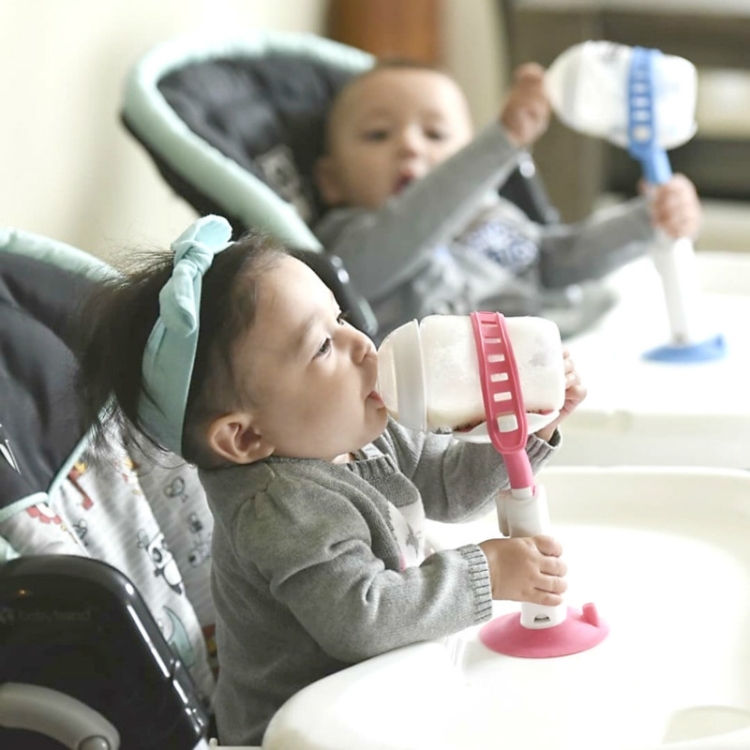 For example, how you hold your baby will affect her ability to feed from a bottle. If her head is too far forward or too far back or her neck is twisted this can make it difficult for her to suck or swallow.
For example, how you hold your baby will affect her ability to feed from a bottle. If her head is too far forward or too far back or her neck is twisted this can make it difficult for her to suck or swallow.
See How to bottle-fed a baby
6. Feeding aversionDoes your baby refuse to feed even when hungry?Does she scream at the sight of a bottle or when placed into a feeding position?Have you resorted to trying to feed her while asleep?A baby can develop an aversion to feeding when past feeding experiences have taught her that feeding is unpleasant, stressful or painful. Typically, baby is diagnosed with reflux and/or milk protein allergy or intolerance to explain her aversive feeding behavior. However, a behavioral feeding aversion (related to feeding management rather than a physical cause) is a far more common cause of infant feeding aversion.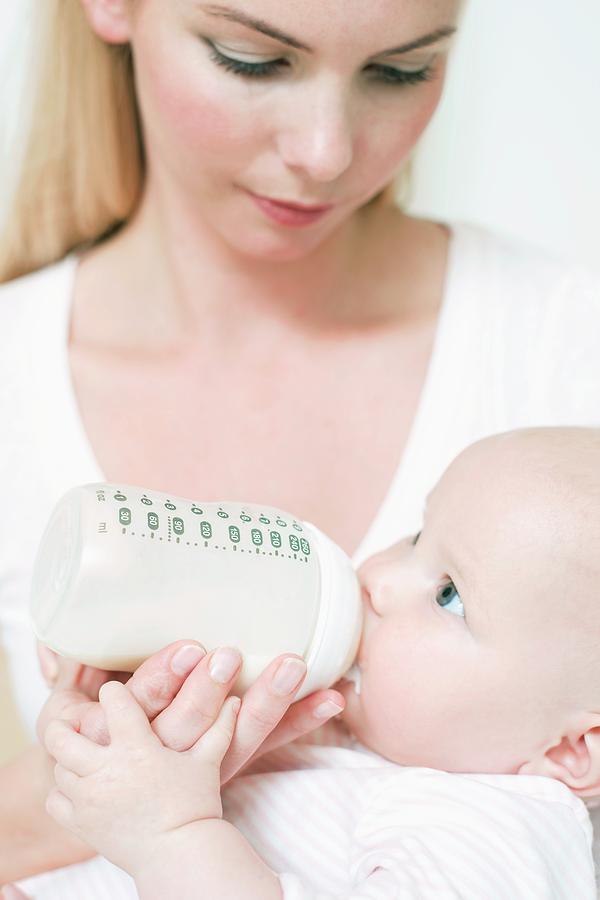
A feeding aversion is the most complex of all infant feeding problems. An effective solution relies heavily on accurate identification of the cause.
WHAT TO DOSee Feeding aversion for more information. Or purchase or download a copy of 'Your Baby's Bottle-Feeding Aversion: Reasons and Solutions'.
7. Feeding equipmentDoes your baby gag, cough or splutter during feed?Does baby make clicking sounds while feeding?It could be the nipple is too long, too short, too fast or too slow.
The most important piece of feeding equipment is the nipple. The nipple needs to be the right size and speed for your baby's size, age and sucking ability. If the nipple is too long, too short, too fast or too slow for your baby, she may experience feeding difficulties and express her frustration by fuss or crying.
WHAT TO DO- See Feeding equipment for more information on choosing a feeding nipple.

- Experiment with nipples of different lengths, shapes and speed.
It's possible her feeding difficulties could be due to the nipple ring being screwed on too tight.
In order to maintain a neutral balance in air pressure within the bottle air needs to be able to enter the bottle to replace the void left by the milk the baby is removing. If the bottle is vented, this is achieved via the venting system. However, in the case of a non-vented bottle, the only ways air can enter the bottle are between the nipple ring and the rim of the bottle and through the holes at the end of the nipple. While sucking, a baby will maintain a seal over the holes at the end of the nipple with her tongue and prevent air entry in this way.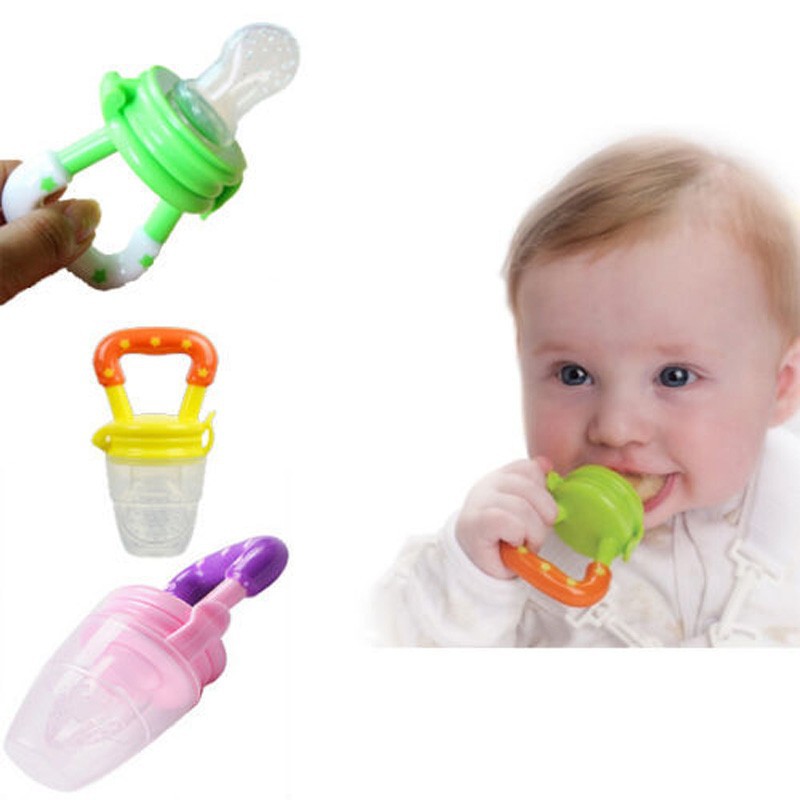 If the nipple ring is screwed down tightly this also prevents air entry.
If the nipple ring is screwed down tightly this also prevents air entry.
If air is prevented from entering the bottle, this causes a negative pressure to build in the bottle. As the pressure builds, baby need to work harder and harder to extract further milk, until such time and the air pressure is returned to normal. The effort required to suck against the negative pressure can cause a newborn baby to tire and fall asleep before completing the feed. An older baby may simply give up or express her frustration.
WHAT TO DOThe nipple collapsing (not all will) or stopping to burp baby allows air to enter through the holes and neutralize the pressure. But you don’t want to wait for this to resolve the problem. By then baby is already tiring or getting frustrated. See ‘Collapsing nipple’ for ways to manage this problem.
9. Feeding patternsIs your baby often take only small amounts, refuse more, but then wants to feed again an hour or two later?Some babies develop a grazing or snacking feeding pattern where they will only drink small amounts of formula at a time and then want to be feed frequently, possibly every hour or two. Although this will not cause any problems for a baby, provided she drinks enough formula in total over a 24 hour period, it can become very tiring for parents to keep up with her constant demands for feeding.
Although this will not cause any problems for a baby, provided she drinks enough formula in total over a 24 hour period, it can become very tiring for parents to keep up with her constant demands for feeding.
- Try to encourage your baby to take as much milk as possible within 45 minutes. But don't try to make her feed if she doesn't want to. Stop sooner if she does not want to continue.
- Ensure baby gets plenty of sleep.
- Avoid allowing baby to fall asleep while feeding.
- Support your baby to extend the time between feeds, by offering a little water, a pacifier, a nap, playing with her, or taking her for a walk. Aim to encourage her to wait at least 3 hours from time you started her previous feed, but only if it's reasonable to do so without distressing her. If necessary extend the time between feeds gradually. As your baby gets used to going longer periods between feeds she will gradually take larger amounts at each feed.

Unless your baby was born prematurely or is very small for her age, developmentally she no longer requires feeding during the night beyond the age 6 months. If nighttime feeding continues past this age its not going to harm her but it could have a negative effect on her appetite and feeding patterns during the day.
Your baby only needs a certain number of calories in her day (24 hours) to provide for her growth and energy needs. If after the age of 6 months she continues to receive calories from nighttime feeds this will dampen her appetite during the day and she will not need to drink as much formula during daytime feeds. You might find she is content to go for long periods of time between feeds (which is usually what would happen at night). She might fuss or refuse some of her daytime bottles when they are offered simply because she's not hungry at the time. Or she might graze during the day.
Or she might graze during the day.
Nighttime feeding will cause your baby no harm, so if you're happy to continue feeding her during the night there's no reason to change a thing. However, it is important that you don't expect her to consume as much milk during the day as she may have otherwise taken if she did not feed at night.
Many babies will give up night time feedings on their own accord, but others will continue to wake and demand feeds overnight for months and possibly years while parents continue to provide feeds at night. Usually the reason babies continues to demand night feeds beyond the age of 6 months is because they have learned to rely on feeding as a way to fall asleep, or because their internal body clock gets turned around - where the baby has decreased appetite during the day because of the continued night feeds and as a consequence of small feeds during the day the baby wakes hungry during the night. Body clock problems can easily become a cyclical pattern that will continue over the long term unless parents take steps to change the situation. Healthy, thriving babies who continue to demand feedings at night beyond the age of 6 months often require guidance and support from parents to cease feeding at night and turn their body clock around to a normal day-night feeding pattern.
Healthy, thriving babies who continue to demand feedings at night beyond the age of 6 months often require guidance and support from parents to cease feeding at night and turn their body clock around to a normal day-night feeding pattern.
Aim to cease overnight feeds after 6 months of age. However, before attempting to do this it's important to address any feeding to sleep issues your baby might have. She would need to learn to fall asleep in a different way before you will be able to successfully encourage her to cease night feeds.
11. Starting solids earlyHave you started giving your baby solids before the age of 4 months?Have you been advised to start solids early?6 months is the recommended age for starting solid foods. Although a small number of babies may benefit from solids prior to this age, it's generally not recommended to start a baby on solid foods before the age of 4 months.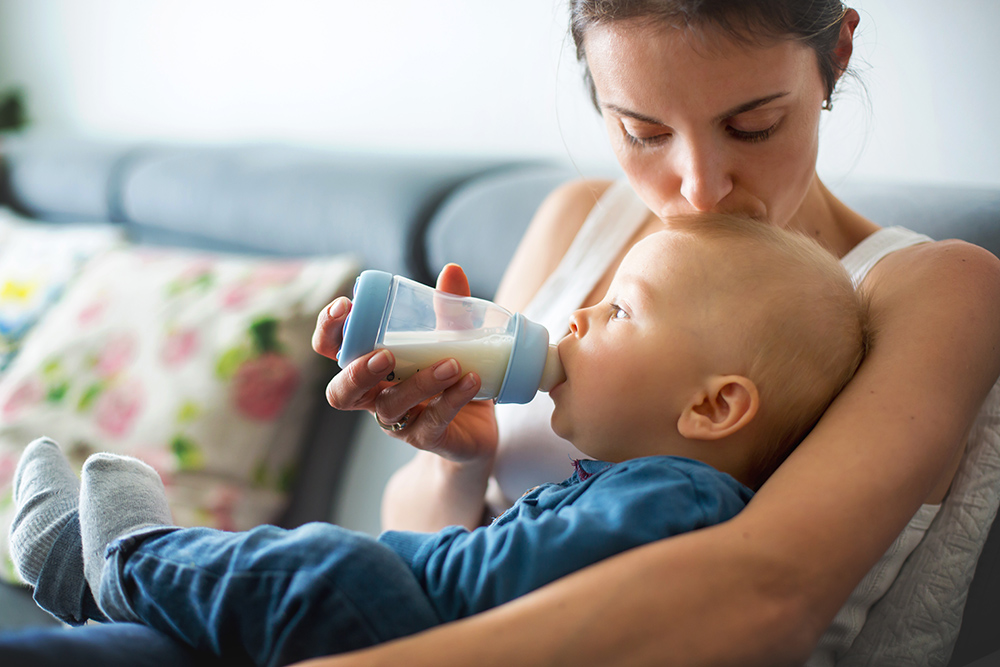 An early start on solids has the potential to cause bottle feeding problems because solid foods may decrease the baby's appetite for milk (breast milk or formula).
An early start on solids has the potential to cause bottle feeding problems because solid foods may decrease the baby's appetite for milk (breast milk or formula).
- If your baby is less than 6 months old, either cease or reduce the amount of solids you offer to see if this helps to improve the situation.
- See our article on starting solids.
If solids are offered prior to bottle feeds, either directly before or mid way between feeds, when it's time for your baby's bottle feed she might be feeling full from the solids, in which case she's probably not going to take much milk from her bottle.
WHAT TO DO- For babies 4 - 9 months (when milk is still the most important food) offer solids 15 - 20 minutes after bottle feeds.
- For babies 9 - 12 months (when solids are becoming increasingly more important to a baby's diet) offer solids shortly before or shortly after her bottle, whichever you find works best.
 Babies at this age are often down to 3 bottles per day plus 3 main meals and 1 or 2 snacks.
Babies at this age are often down to 3 bottles per day plus 3 main meals and 1 or 2 snacks.
In these early stages of learning to eat solids (4 - 7 months) solids are not needed to add value to a baby's nutritional intake, rather they are offered primarily to provide learning experiences. The baby is exposed to new food proteins that help prime her immune system. She gets to discover new tastes and textures and become accustomed to eating from a spoon. It is at this age that babies are most willing to accept new tastes. So variety rather than quantity is what solids are about.
Many babies, particularly very young babies, experience difficulty self-regulating their dietary intake. Some babies will continue to eat solid foods for as long their parents keep offering. Some babies will prefer eating solids compared to drinking formula. However, too much solids and not enough milk is not a balance diet for a baby. It may be necessary for parents to limit the amount of solids they offer in order to encourage their baby to have a greater appetite for milk feeds.
However, too much solids and not enough milk is not a balance diet for a baby. It may be necessary for parents to limit the amount of solids they offer in order to encourage their baby to have a greater appetite for milk feeds.
See our article on estimating how much milk your baby needs to make sure she's getting enough.
14. Weaning difficultiesDoes your breastfed baby refuse bottle-feeds?Does your baby have a breast preference?While some breastfed babies willing accept milk from a bottle many will not, at least not straight away.
Difficulty weaning from breast to bottle is rarely resolved by finding the 'right' feeding nipple. (All feeding nipples will feel equally foreign to a breastfed baby.) Nor does a solution lie in finding a formula with the 'right' taste. All formula will taste strange to a breastfed baby). The difficulty associated with weaning to a bottle most often lies in the fact that bottle-feeding requires a very different sucking action to breastfeeding.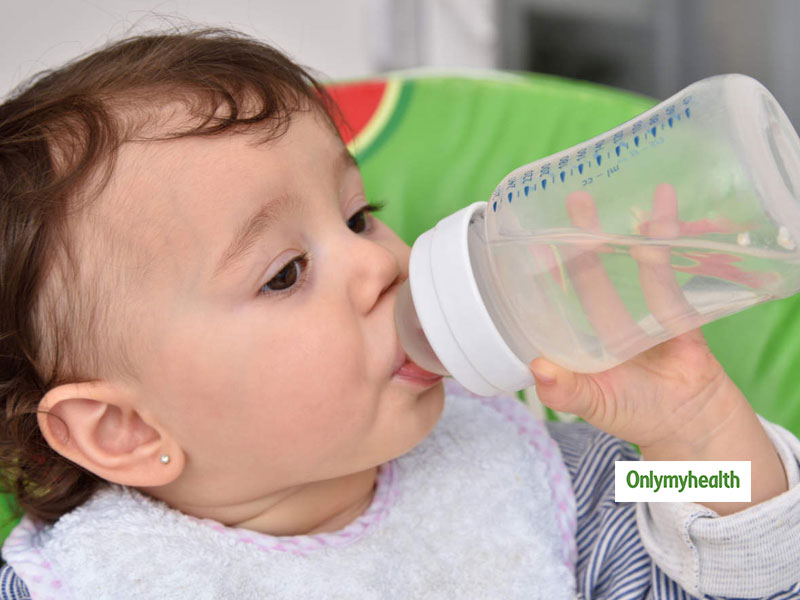 While breastfeeding the movement of your baby's tongue milks the breast, where as bottle-feeding requires a sucking action. A baby who has been exclusively breastfed beyond the age of 3 months will often refuse milk from a bottle because it "doesn't feel right" and she doesn't know how to suck from a bottle.
While breastfeeding the movement of your baby's tongue milks the breast, where as bottle-feeding requires a sucking action. A baby who has been exclusively breastfed beyond the age of 3 months will often refuse milk from a bottle because it "doesn't feel right" and she doesn't know how to suck from a bottle.
It takes time and practice before a breastfed baby learns how to suck on a bottle.
WHAT TO DO- Try offering expressed breast milk in a bottle initially. (Don't be too optimistic and put too much in to start with. It would be a shame to waste it).
- A soft flexible nipple often works better.
NOTE: Many breast fed babies will refuse to accept a bottle while they are still being breastfed at times. They will simply wait until a breastfeed is offered. For these babies it will be the case of breastfeeding or bottle-feeding, but not both.
How we can help your baby take a bottle- Your Baby's Bottle-feeding Aversion book
- Baby Care Advice consultation
- Rowena Bennett's Online Bottle-Feeding Aversion Program
In my book, ‘Your baby’s Bottle-feeding Aversion’, I have described physical and behavioral reasons for babies to develop an aversion to bottle-feeding. How to identify the cause and the solutions to match. Included are step-by-step instructions on how to regain your baby’s trust and resolve a feeding aversion caused or reinforced by repeated pressure to feed.
How to identify the cause and the solutions to match. Included are step-by-step instructions on how to regain your baby’s trust and resolve a feeding aversion caused or reinforced by repeated pressure to feed.
While the book was written for bottle-fed babies, many nursing mothers have found that applying the same strategies has also helped them to successfully resolve a breastfeeding aversion.
You might find that reading this book is all you need to do to understand the steps you need to take to resolve your baby’s feeding aversion and get him back to the point of enjoying eating until satisfied.
Baby Care Advice ConsultationsIf you would like an individualized assessment of all reasons for infant feeding problems, not just feeding aversion, we also provide a consultation service. Baby Care Advice consultants have extensive experience in pinpointing the cause of feeding aversion and other behavioral feeding problems such as those related to equipment and the parent’s feeding practices.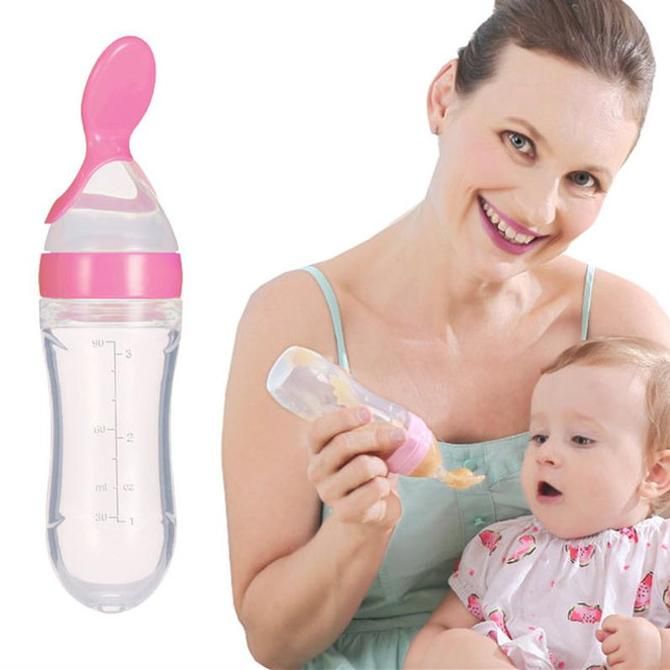 (For more on what’s included in a consultation).
(For more on what’s included in a consultation).
By Rowena Bennett, RN, RM, CHN, MHN, IBCLC.
Copyright www.babycareadvice.com 2021. All rights reserved. Permission from the author must be obtained to reproduce all or any part of this article.
Rowena's Online Bottle-Feeding Aversion ProgramSix time-saving modules to help your family enjoy feeding again with Rowena's step-by-step plan. Enjoy additional tools to manage anxiety, troubleshoot any issues, introduce new carers, how to manage illness/teething and much more.
- Module 1: Understanding feeding aversions
- Module 2: Identify the cause
- Module 3: Prepare for success
- Module 4: How to resolve your baby's bottle-feeding aversion
- Module 5: What to expect
- Module 6: Troubleshooting
- BONUS: Guided meditations
Colic - they pass! - articles from the specialists of the clinic "Mother and Child"
You can't confuse anything with anything
A healthy child was discharged from the maternity hospital, he grows and pleases his loved ones. Yes, the baby sometimes cries a little, but what children do not cry! Moreover, over time, mom and dad get used to their new role and gradually understand what their baby needs. Yes, and the reasons for crying are usually simple: the child wants to sleep or, conversely, to communicate, he is cold or hot, in the end, he most often just needs to eat! Later, when colic begins, that crying of the first days and weeks of life will seem to parents only a slight irritation or whims. But mom and dad don’t know this yet and just rejoice at how their son or daughter is gaining weight and gaining strength. And suddenly out of the blue it starts! Usually in the afternoon, a child who was completely calm before that first frowns, wriggles, twists his mouth, grunts, then such a cry is heard that at the first moment especially tremulous parents clutch at their hearts.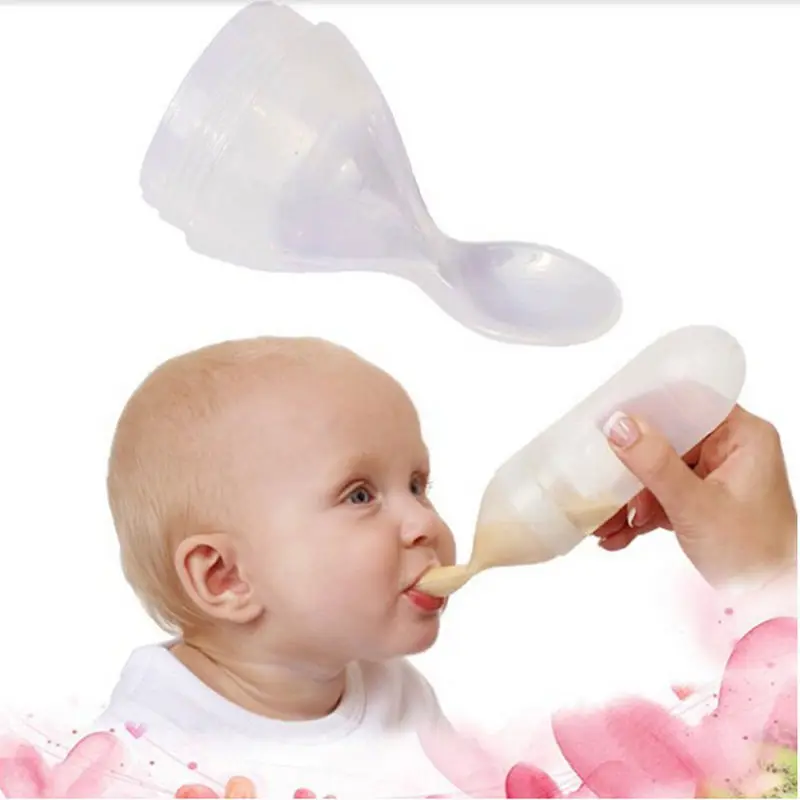 The baby presses the legs to the stomach, and often beats the air with his hands, his face turns red from crying, and his stomach tenses. And suddenly the child stops. Gone? No, almost immediately everything repeats again. And so at least half an hour in a row, and as a maximum - several hours a day. In the end, the child's strength ends and he falls asleep in exhaustion. Exhausted parents, too. The next day everything starts all over again.
The baby presses the legs to the stomach, and often beats the air with his hands, his face turns red from crying, and his stomach tenses. And suddenly the child stops. Gone? No, almost immediately everything repeats again. And so at least half an hour in a row, and as a maximum - several hours a day. In the end, the child's strength ends and he falls asleep in exhaustion. Exhausted parents, too. The next day everything starts all over again.
If you are very lucky, then such attacks will last only one or two times per evening for 30 minutes - 1 hour. On average, the attack lasts up to 3 hours. But there is a worse option: every day the strength, duration and frequency of screams will increase, until in the end the child starts screaming every two hours in the morning, and in the afternoon, and in the evening, and at night, of course. It will seem to parents that now this one is forever, but by 3 months babies are miraculously healed, only a few have colic that lasts up to 4-5 months (it’s good that they are already much less pronounced).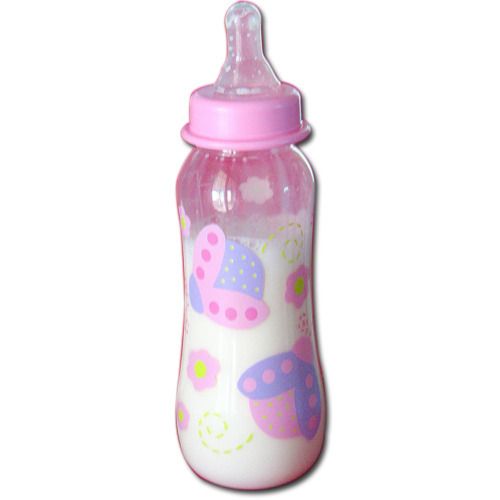 That's what they are, infantile colic! Well, from the point of view of doctors, colic is just paroxysmal pain in the abdomen, accompanied by pronounced anxiety of the child.
That's what they are, infantile colic! Well, from the point of view of doctors, colic is just paroxysmal pain in the abdomen, accompanied by pronounced anxiety of the child.
Many years ago it was noticed that there is a certain regularity in the manifestation of colic, the so-called "rule of three" :
- Colic often begins by three weeks of life - yes, this is almost always the case.
- Lasts an average of about three hours a day - unfortunately, this is only an average.
- Usually found in children of the first three months of life - fortunately, this is true.
There is also a positive moment in colic : usually the general condition of the child does not worsen with intestinal colic: the child has a good appetite, he gains weight as it should, in the intervals between bouts of colic the baby is cheerful and looks as if nothing had happened. Against the backdrop of an endless ora, parents are already happy with every little thing.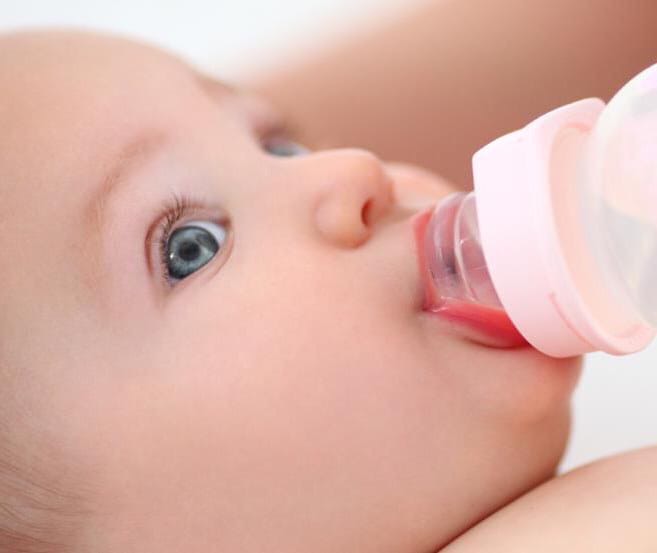 And since there are no other symptoms other than crying, then colic is not considered a disease. Doctors call them a functional disorder in the work of the gastrointestinal tract (this means that there is no structural disturbance in it, it’s just that the digestive system is not yet working quite correctly).
And since there are no other symptoms other than crying, then colic is not considered a disease. Doctors call them a functional disorder in the work of the gastrointestinal tract (this means that there is no structural disturbance in it, it’s just that the digestive system is not yet working quite correctly).
Have you read this far and become a little scary?
The best news: not all children have colic! There are lucky ones who only shrug their shoulders in surprise when asked if their child had colic.
The reason is not established
There is another interesting feature of colic: it is difficult to determine exactly why colic occurs. There are many reasons for this, and each baby can have his own:
- Enzymatic system of the gastrointestinal tract is not yet mature. Therefore, the food is not fully digested and too much gas is formed in the intestines, the gases stretch the walls of the intestine, hence the pain.
- The intestinal microflora is not yet fully established and changes frequently, again leading to excess gas and pain.

- The neuromuscular apparatus of the intestine is also not yet fully mature. As a result, intestinal motility and spasms increase.
- The baby swallows too much air during feeding (he is not attached to the breast correctly or he suckles too greedily). Air stretches the walls of the intestines, which is also painful for many children.
- Mom is breastfeeding and eating a lot of dairy products, and the baby is allergic to cow's milk protein. As a result of this allergy, the intestinal wall is damaged. Secondary lactase deficiency occurs, the child lacks the enzyme lactase, which breaks down milk sugar. Sugar ferments in the intestines, there are more and more gases and, as a result, pain occurs.
- The baby has an increased sensitivity of the intestinal wall to stretching. The child feels pain that another infant (or adult) will not pay attention to.
- If the baby is bottle-fed, then the whole thing may be in the mixture.
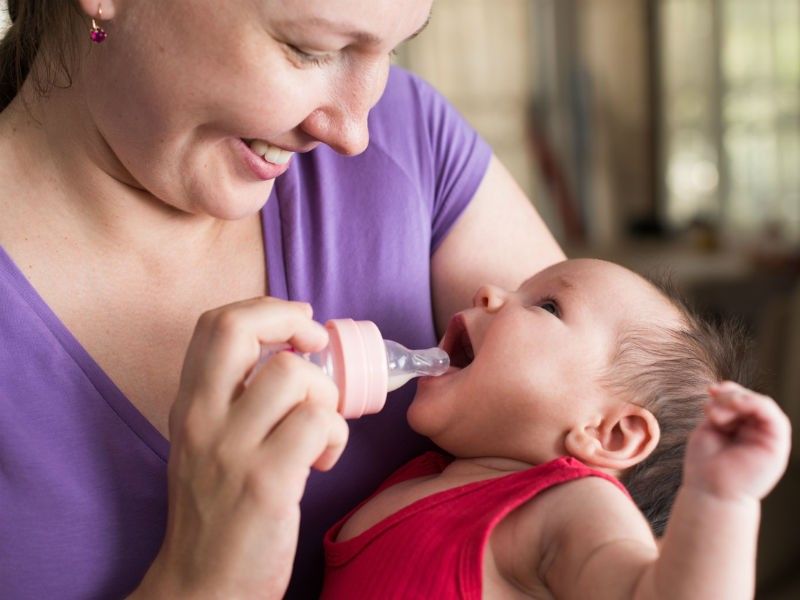 Most likely, it is not suitable for a child.
Most likely, it is not suitable for a child.
Well, if the cause of colic is some one and not very serious. For example, a baby swallows a lot of air during feeding. Then the colic will not be too pronounced. In addition, it is not difficult to eliminate this cause, you just need to adjust the feeding. As a rule, colic is quite tolerable as long as the child has functional immaturity of the gastrointestinal tract (for example, the microflora has not been established or there are few enzymes). The baby cries in the evening, even if for three hours, but 21 hours out of 24 he is quite calm. In the end, when every evening (or three or four times a week) the same scenario is repeated, you already get used to it.
But if there are several causes of colic at once or there is an allergy to cow's milk protein with lactase deficiency, then parents will fully feel what it is like when a child throws a tantrum every two hours.
To make it easier for the pediatrician to figure out what is likely to cause colic, parents should tell them as much as possible about their child.![]() To do this, will have to keep a diary of colic and nutrition of baby . By the way, some mothers are so addicted to these records that they continue to keep them even when the colic has already passed (just in case). Well, then they get used to the fact that there are no more colic, and calm down.
To do this, will have to keep a diary of colic and nutrition of baby . By the way, some mothers are so addicted to these records that they continue to keep them even when the colic has already passed (just in case). Well, then they get used to the fact that there are no more colic, and calm down.
What should be recorded in the food diary:
- When colic occurs: before, during or after feeding, if after feeding, after what time.
- How long does colic last.
- Is there any rhythm in colic, do they occur at the same time or at different times.
- When colic is most pronounced (morning, afternoon, evening).
- How a mother feeds a child - breastfeeding or formula. If breastfeeding, then how many milliliters the baby eats in one feeding. Breastfeeding by the hour or free.
- If formula is given, what kind, dosage and how often.
- What does a mother eat if she is breastfeeding.
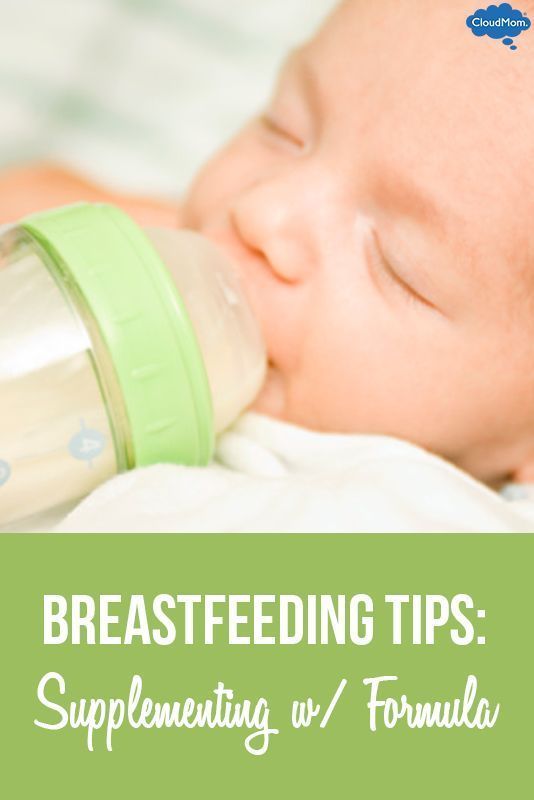
What to do about it
Is it necessary to somehow examine a child with colic? Even if the doctor says that the baby has the most common colic, parents will still want to take a lot of tests and ultrasound of the abdominal cavity.
And it is clear that the more a child cries, the more mom and dad want to examine him .
Ultrasound usually shows that the structure of the internal organs of the child is all right (immaturity and allergy are not visible on ultrasound). But parents even from this are already calmer. In coprology (fecal analysis), some changes are possible, and in the analysis of feces for carbohydrates (it confirms lactase deficiency), carbohydrates will be increased. Microbiological examination of feces (sowing) does not bring clarity to the picture of colic. The composition of the microflora, and so on, may not yet be fully established, and against the background of increased gas formation, in addition, it will be changed.
So what to do now? As already mentioned, colic disappears with age. Someone will say that you just need to be patient and wait. This, of course, is true, but when the baby cries and screams all the time, it affects the nervous system of everyone around. The situation in the house becomes nervous, the parents calm the baby with their last strength, and the mother also needs to feed the child, and walk with him, and cook food. Dad is also exhausted by endless screams and night vigils, and he is the breadwinner in the family, plus, if driving, he must concentrate on the road. In general, everyone needs rest, which means that colic needs to be dealt with somehow.
Let's say right away that there is no 100% effective treatment for colic: although many ways have been invented to deal with them.
Someone helps one thing, someone else - you have to try almost all methods:
Proper feeding . If the mother is breastfeeding on demand, then feeding should not become erratic, especially if colic is aggravated during meals or immediately after it.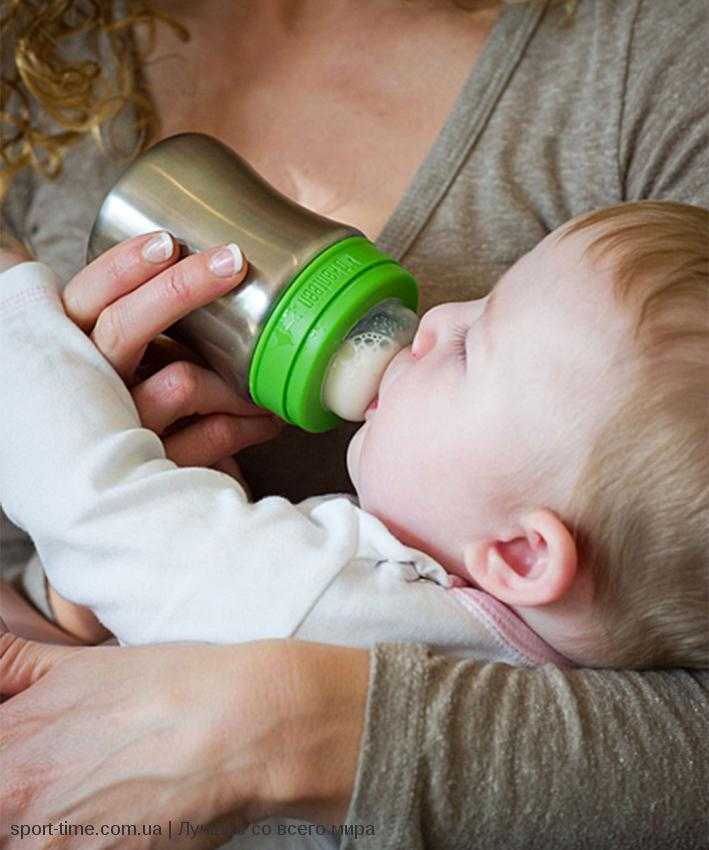 The baby should not swallow air during feeding, so you need to make sure that he completely captures the areola. If the baby is bottle-fed, then the nipple should be age-appropriate (the hole for milk in it should not be very large). You can use special anti-colic bottles - they prevent the swallowing of air during feeding. Before feeding the baby, you can put it on your stomach for 10-15 minutes, this stimulates the intestines. After feeding, the child must be held upright so that he burps the air. But for some reason, colic often occurs even if all these rules are observed.
The baby should not swallow air during feeding, so you need to make sure that he completely captures the areola. If the baby is bottle-fed, then the nipple should be age-appropriate (the hole for milk in it should not be very large). You can use special anti-colic bottles - they prevent the swallowing of air during feeding. Before feeding the baby, you can put it on your stomach for 10-15 minutes, this stimulates the intestines. After feeding, the child must be held upright so that he burps the air. But for some reason, colic often occurs even if all these rules are observed.
Heat and massage . For some children, colic is relieved (or relieved) by putting something warm on their stomach or simply taking a warm bath. Someone helps just a diaper folded several times and ironed with an iron. But caring fathers wear someone for hours, attaching to their chest, or simply put the baby on their stomach, but, alas, there is no effect. The same thing happens if you give the baby a light massage of the abdomen in a clockwise direction: it will not help, you can only guess.
Mom's food . Pediatricians often recommend that mom exclude any dairy and sour-milk products (milk, cheese, cottage cheese, yogurt, kefir, ice cream) from her diet. Under the ban are products that, even partially, contain milk: for example, cookies, pastries. Well, women are no strangers to diets, especially since with severe colic in the crumbs, the mother will already agree to everything. Usually after 7-10 days you can see if the diet helps or not. If there are results, then it is most likely that the child is allergic to cow's milk protein and the mother will have to stay on a dairy-free diet for some more time.
Children's herbal teas and products with chamomile, fennel (they relieve intestinal spasm and improve flatulence) - again, the result is the opposite. But it is better not to give them yourself. Herbs can also be allergic, which will only increase colic. What remedy is better to give (or not to give anything at all), the pediatrician will decide.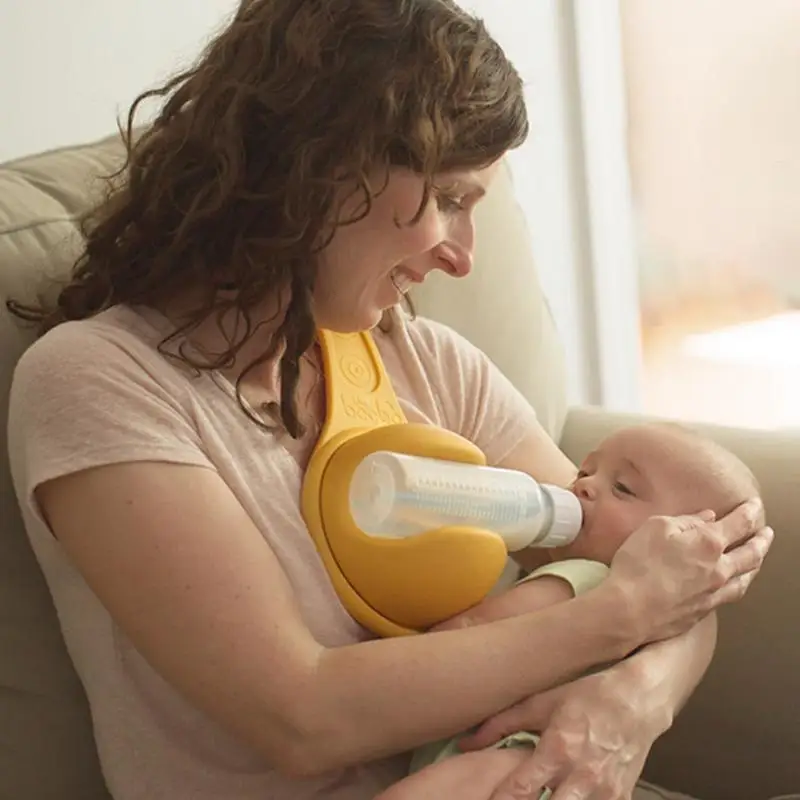
Drugs that destroy the walls of the gas bubble . Here, as with other methods, the effect is often temporary and not 100%. After all, these funds only relieve the symptoms, and the cause of gas formation remains.
Enzymes for lactase deficiency . If it is confirmed, then enzymes (lactase) help well. The main thing is that the cause of colic is established correctly.
Motion sickness, wheelchairs and driving . They always rocked children, but it’s just necessary to pump, and not shake the child like a pear. Violent shaking can cause a concussion.
Unconventional products . It sounds strange, of course, but some parents claim that the sound of a vacuum cleaner or a hair dryer calms a screaming baby well.
Another way is to sleep outside. There are such amazing babies who, for some reason, calm down perfectly in the fresh air in the evening, but as soon as their mother tries to return home, they instantly wake up and raise a cry. As soon as evening colic begins, mothers grab the child, the stroller - and run into the street. And it’s not at all about riding in a stroller: the baby sleeps even if she just stands still. This is how mothers sit at the entrance until midnight. Nothing to say - heroic women!
As soon as evening colic begins, mothers grab the child, the stroller - and run into the street. And it’s not at all about riding in a stroller: the baby sleeps even if she just stands still. This is how mothers sit at the entrance until midnight. Nothing to say - heroic women!
Does the child have colic? Answer questions :
- Did colic start at about 3-4 weeks of age?
- Appear regularly, more often in the evening?
- Does the attack last about half an hour or more?
- Is relief after passing flatus or stool?
- Is the seizure accompanied by restless behavior?
- The cry is loud, piercing, undulating (sometimes it fades, then it reappears)?
- The tummy is swollen, does the baby press the legs to the stomach or twist them?
If there is a majority of positive answers, the probability that it is colic is high.
The child is 3 months old or a little more, the baby is more often almost always joyful and cheerful.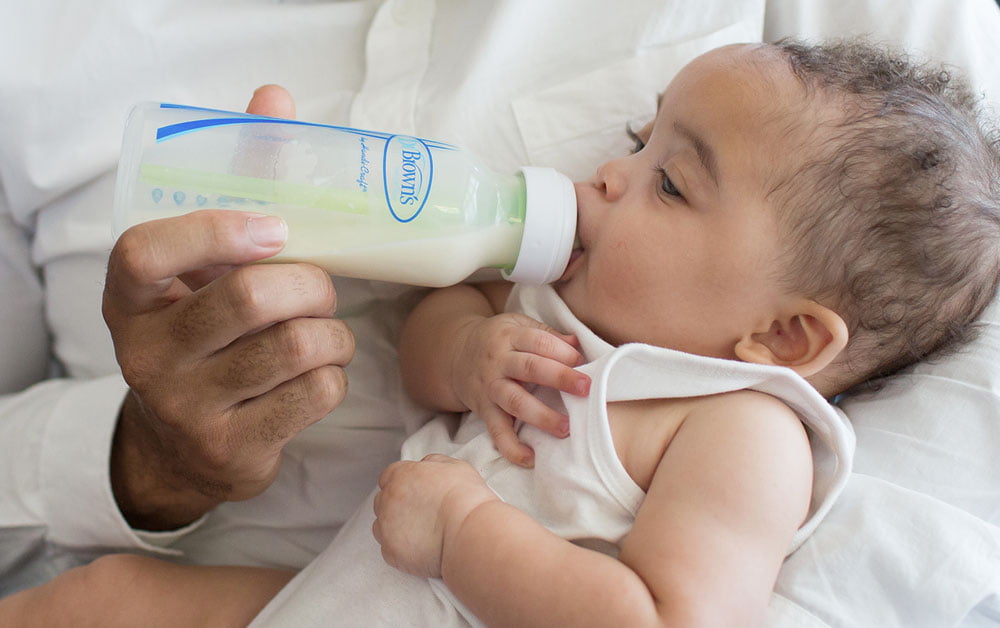 And suddenly - colic disappear completely. What about parents? Parents do not believe their luck for a long time!
And suddenly - colic disappear completely. What about parents? Parents do not believe their luck for a long time!
Artificial feeding of babies | Bebbo
Submitted by Ilya Danshyn on Wed, 12/08/2021 - 18:40
Sometimes the baby cannot breastfeed, so you have to express milk and bottle feed the baby. Some babies are formula fed because for some reason breastfeeding is not possible, or lactation has stopped prematurely, or you have chosen to formula feed your baby.
- Make sure that the rate at which milk flows from the bottle through the nipple is appropriate for the baby.
- To check this, turn the filled bottle upside down.
- Milk should drip quickly, not squirt. If you have to shake the bottle hard to make the milk drip, it means that the nipple is not providing the normal intensity of feeding.
- The baby can fall asleep even before he has eaten everything from the bottle.
- It is normal for a small amount of milk to leak from the corners of the mouth; it will stop when the child gets older.
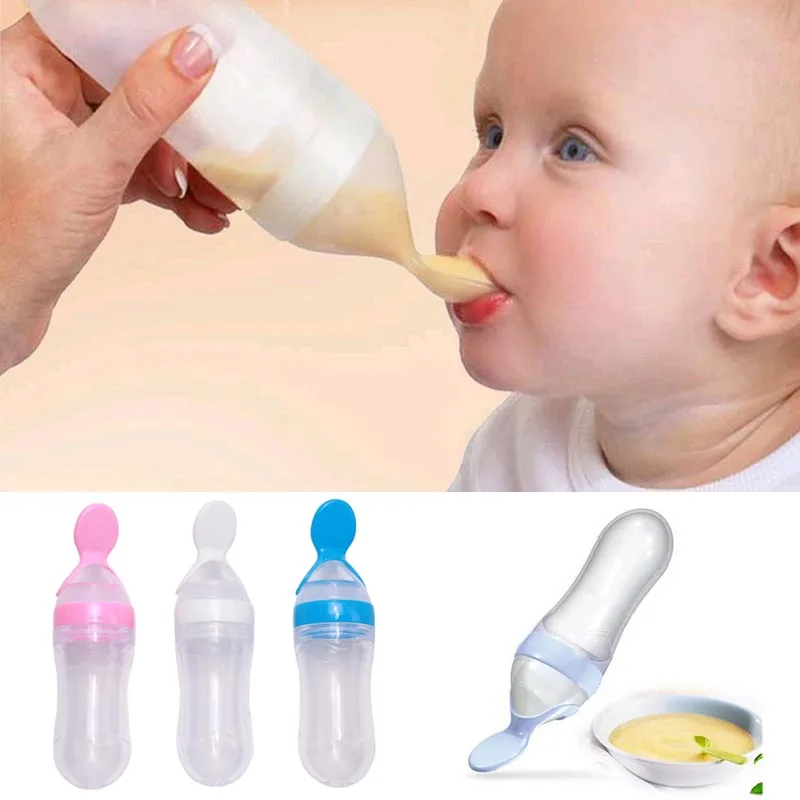
- If you can't find the perfect nipple, choose the one that produces the most milk; it's okay if you have to go through how many nipples before you find one that's right for you and your baby.
How to bottle feed your baby
- Sit back and hold your baby in your arms, gently but firmly. It is better for the baby to be in a more upright position, similar to the position when breastfeeding.
- Place the pacifier between the baby's lips; he will open his mouth and start sucking.
- Hold the bottle at an angle so that the nipple and mouth of the bottle are constantly filled with milk; this will prevent the child from swallowing air.
- When the baby stops actively sucking or has eaten half the milk from the bottle, carefully remove the bottle and check if he wants to burp; after that, you can continue feeding.
- Change the position of the baby during feeding or at least at each feeding; this allows even stimulation of the baby's sensations on both sides of the body and prevents positional deformation of the head.

How much milk does a baby need?
- The number of meals and the amount of milk is determined by the baby! Different babies require different amounts of breast milk or formula. Feeding time is not always evenly distributed over the time of day, sometimes children eat more during the day, followed by a long night break.
- If you are formula feeding, check the chart on the box. Of course, the recommended serving size for your age will only serve as a guideline and may not necessarily be appropriate for your child.
- When a baby begins to receive complementary foods, as the amount of solid food increases, the baby's need for milk decreases.
- The amount of formula your baby eats will decrease when he switches from bottle to cup.
- By the age of 12 months, when a baby can switch to cow's milk, he usually receives 500-600 ml of breast milk or formula per day.
Some babies never eat the recommended amount of milk for their age and height.
For some, this "recommended" volume is not enough. At least six wet diapers during the day, constant but not excessive weight gain, a healthy and active child - all this indicates that everything is in order. If you are concerned that your baby is not getting enough milk or formula, contact your doctor.
Responsive feeding from the bottle in accordance with the needs of the child
- Feed the baby when he shows that he is hungry and not according to the schedule, follow his signals.
- Do not feed the baby if he is not hungry, just because the formula is already prepared - this can lead to overfeeding the baby.
- When a baby is bottle fed, there is no difference between foremilk and hindmilk that affects the feeling of satiety in a breastfed baby.
- The child is often held so that the milk simply flows into the mouth, rather than actively suckling; in this case, he eats too much milk too quickly.
- During feeding, watch the baby for signs of satiety - he turns away from the bottle, sucks lazily - and stop feeding in time.
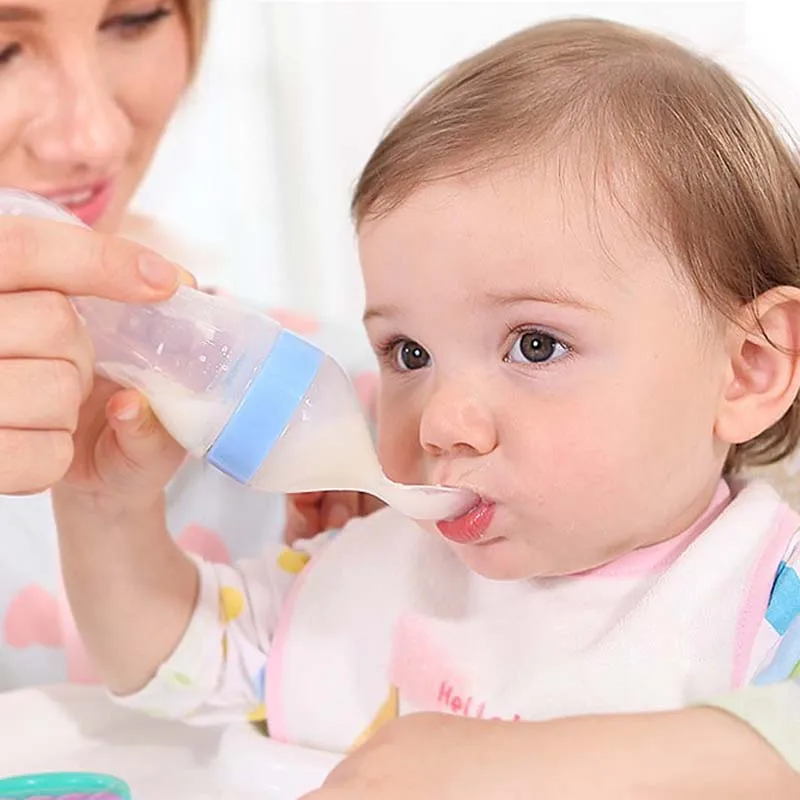
- Hold the baby close to you during feeding, hug and talk to him; it stimulates growth and development and also strengthens the bond between you and your child.
- The baby did not eat everything from the bottle and fell asleep while eating.
- Don't worry if the baby didn't eat everything; he knows how much formula or breast milk he needs.
- If the child falls asleep while eating, put him on your shoulder, stroke or pat him on the back and legs; Changing diapers is also an effective way to wake up a baby.
- Wait until the baby is awake before giving the rest of the milk.
Always empty the remaining milk from the bottle if more than an hour has passed!
Night feeding
- Every baby is different. Some wean from night feeding at four months, and some at two years. From the 6th month of life, healthy babies no longer need night feeding. Now it's just a habit that gets harder to change the older the child gets.

- If a baby is bottle fed, this is the last age to stop eating at night! Do not replace milk with juices or other sweetened drinks to protect your child's teeth from cavities.
- If your baby drinks 60 ml of milk or less during the night, you can simply stop feeding at night and calm the baby as you normally would, then put him back in his crib to fall asleep on his own.
- If your baby eats more than 60 ml every night, gradually reduce the amount of milk over 5-7 nights and lull the baby as you usually do.
Risks of bottle feeding in bed
- If your child gets used to falling asleep with a bottle in bed, it will be more difficult for him to learn to calm down or fall asleep on his own.
- If a child falls asleep with a bottle in his mouth, there is a risk of choking on milk and suffocation. Babies are not as light sleepers as older children and adults, and do not wake up if something prevents them from breathing.
